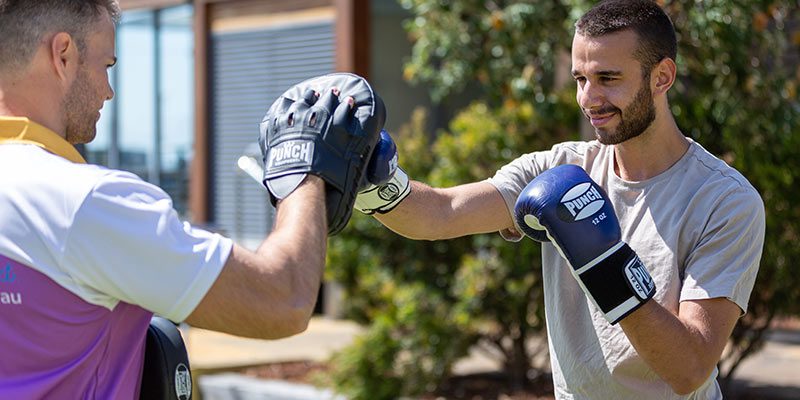
Exercise isn’t just important as a weight loss tool, regular exercise can help reduce the risk of developing long-term health concerns like heart disease, diabetes, some cancers and prevent mental health conditions such as anxiety and depression. In fact, exercise is the only ‘medication’ that targets the prevention and management of all nine national health priority areas.
A strong focus has been placed upon the importance of regular exercise for our physical and mental health but did you know that exercise can also help to keep our brains healthy and reduce the risk of developing Dementia and Alzheimer’s Disease later in life.
Developing positive exercise habits is important for all of us, at all stages of life. So just how much exercise should we all be doing?
Exercise for Children
Children over five should aim to achieve 60 minutes of moderate activity per day and screen time should be limited to no more than 2 hours per day.
For children, being active can help:
- Develop healthy bones, muscles and joints
- Develop a healthy heart and lungs
- Maintain a healthy body weight
- Increase flexibility
- Establish better balance and posture
- Improve brain development and concentration skills
Examples of exercise/physical activity for children include playing games that include running, kicking, swimming, throwing – these may be in a group or individual environment. Family-based physical activity is also vital and this may involve things like walking, playground activities and riding bicycles.
Exercise for Teenagers
Teenagers are becoming increasingly inactive with only 1 in 10 Australian teenagers aged 15-17 meeting the physical activity guidelines. This worrying trend places sedentary teenagers at higher risk of developing long-term health concerns including diabetes in early adulthood. It can also affect their overall mental health, energy levels, knowledge retention and academic performance.
To experience these physical and mental benefits, as well as improved self-esteem and confidence, teenagers should aim to achieve around 60 minutes of mild to moderate physical activity per day.
Examples of exercise/physical activity for teenagers include team sports, individual sports, recreational games, swimming, cycling and running among many more.
Exercise for Adults
As adults, our lives become more diverse and often increasingly busy meaning that unfortunately, exercise becomes more of a chore or another thing on the never-ending to-do list, with only half of all Australian adults meeting their daily physical activity needs.
It is really important to think of exercise as an enjoyable experience and tailor your physical activity around your lifestyle. A more active lifestyle focused on sustainable and balanced movements will not only reduce your risk of many physical and mental health issues and promote a healthy weight it will also increase social engagement and self-confidence.
Adults should aim to be active most days of the week and achieve a minimum of 150 minutes (30 minutes; 5 times per week) of moderate to vigorous exercise each week. Preferably, and based on your individual circumstances we should aim for up to 300 minutes (60 minutes; 5 times per week) of this activity.
There should be a focus on balancing your exercise between cardiovascular and resistance exercises and we recommend that you incorporate strength exercises into your lifestyle on at least 2 days each week.
As well as participating in team or individual sports, adults are encouraged to exercise recreationally and may choose yoga, running, walking, gym workouts, swimming or cycling among many more options.
Exercise for Elderly People
Elderly Australians should aim to achieve 30 minutes of moderate exercise most days. Staying active is essential to help:
- Reduce falls risk
- Maintain independence
- Slow the rate of muscle atrophy (wastage)
- Maintain heart and lung function
- Reduce the risk of neurological disease
There are many ways that older Australians can maintain an active lifestyle. These include:
- Home-based strength exercises using body weight and/or a resistance
- Walking
- Water-based exercises
- Gardening
As we celebrate exercise and reinforce that movement is in fact medicine, it is important to consider that if we had a pill that conferred all the health benefits of exercise then it would be the most widely prescribed medicine in the world and eradicate a majority of chronic disease.
We do not have such a pill, nor will we ever possess one, however, we do possess the prescription and it is found in our bodies, and in our mind – it is called physical activity. The true secret is that we all control our own access to this magic pill – actively making the decision to engage with physical activity on a consistent basis is the absolute key to a healthier lifestyle and I wish you all the best with your exercise journey.